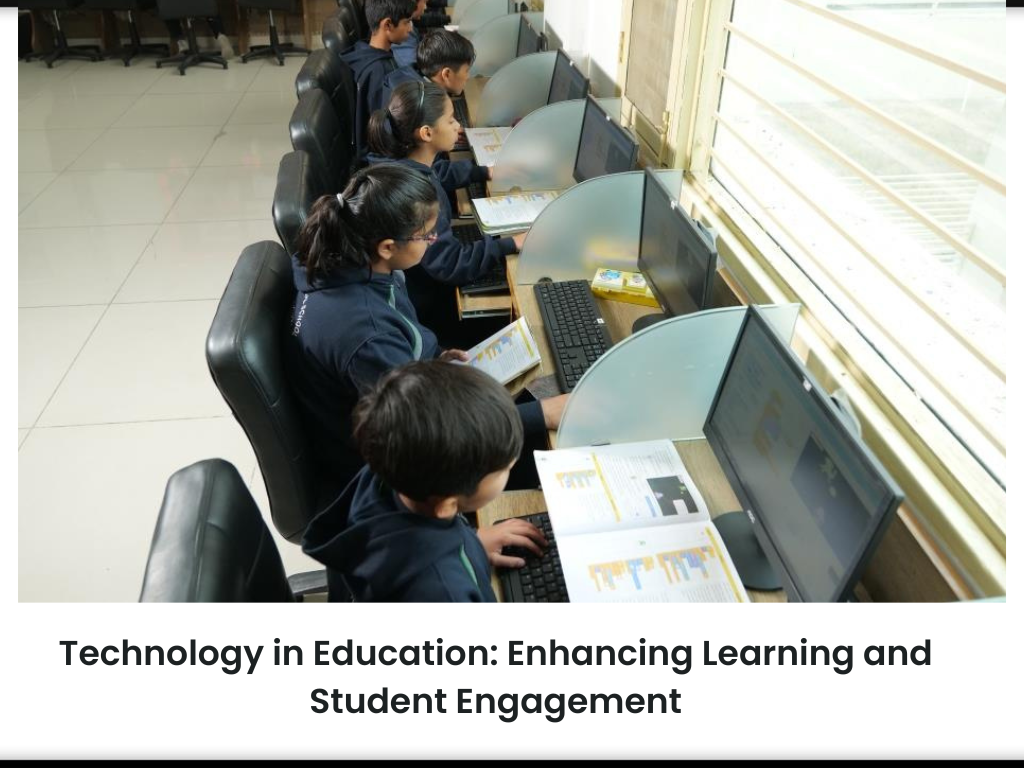Introduction
Technology has revolutionized nearly every aspect of our lives, including education. In today’s digital era, incorporating technology in the classroom has become essential for enhancing learning experiences and engaging students in new and exciting ways. We at the Star Global School being amongst the top cbse school in Rohtak explores the impact of technology in education, highlighting its potential to transform traditional teaching methods, foster student engagement, and empower learners to thrive in a technologically advanced world.
1. The Evolution of Technology in Education
The integration of technology in education has come a long way, from the introduction of computers in classrooms to the proliferation of interactive digital tools and online learning platforms. With advancements such as smart boards, educational apps, virtual reality (VR), and artificial intelligence (AI), technology has opened up endless possibilities for educators to create dynamic and immersive learning environments.
2. Personalized Learning and Adaptive Technologies
Technology in education allows for personalized learning experiences tailored to individual student needs and preferences. Adaptive learning technologies, powered by AI algorithms, analyze student performance and provide targeted feedback, allowing educators to customize instruction accordingly. This individualized approach promotes self-paced learning, boosts student confidence, and ensures that every student receives the support they require to succeed.
3. Enhancing Accessibility and Inclusivity
Technology has played a pivotal role in making education more accessible and inclusive. Assistive technologies, such as screen readers, speech-to-text tools, and captioning systems, enable students with disabilities to participate fully in the learning process. Furthermore, online learning platforms and digital resources provide flexibility for students who face geographical or physical limitations, ensuring that they can access educational content anytime, anywhere.
4. Engaging Learning Experiences through Multimedia
Traditional classroom lectures can often be passive and uninspiring for students. However, technology offers a wide range of multimedia tools that foster active learning and engagement. Interactive presentations, videos, animations, and educational games make learning more captivating and interactive, encouraging students to actively participate and explore complex concepts in a stimulating and memorable manner.
5. Collaboration and Communication Opportunities
Technology provides platforms for seamless collaboration and communication among students and educators. Online discussion boards, virtual classrooms, and collaborative document editing tools enable students to connect, exchange ideas, and work together on projects, regardless of their physical locations. This promotes teamwork, critical thinking, and effective communication skills, preparing students for collaborative work environments in the future.
6. Real-World Connections and Global Perspectives
Through technology, students can transcend the boundaries of their classrooms and gain exposure to real-world experiences and global perspectives. Virtual field trips, video conferencing with experts, and online cultural exchanges enable students to explore different cultures, environments, and perspectives, fostering cultural competence and broadening their horizons. This global outlook prepares students to be active participants in a diverse and interconnected world.
7. Data-Driven Decision Making and Personalized Feedback
Technology enables educators to collect and analyze vast amounts of data on student performance, providing valuable insights for instructional improvement. Learning management systems and data analytics tools allow teachers to monitor student progress, identify areas of strength and weakness, and deliver personalized feedback. This data-driven approach enhances instructional effectiveness, enabling educators to tailor their teaching strategies to address individual student needs effectively.
8. Preparing Students for the Future Workforce
Incorporating technology in education equips students with the digital literacy and technical skills necessary for success in the modern workforce. Proficiency in using productivity software, coding languages, data analysis tools, and online research methodologies prepares students for a technology-driven job market. Additionally, exposure to emerging technologies such as AI, robotics, and automation fosters adaptability and creativity, enabling students to navigate future professional challenges confidently.
Conclusion
Technology in education has the power to revolutionize traditional teaching methods, enhance learning experiences, and promote student engagement. By embracing technology, educators can create dynamic and immersive learning environments that cater to individual student needs, foster collaboration and communication, provide real-world connections, and prepare students for the future workforce. We at the Star Global School, one of the top school in Rohtak believe that as technology continues to evolve, it is imperative for educators to adapt and harness its potential to empower learners and shape the future of education.


